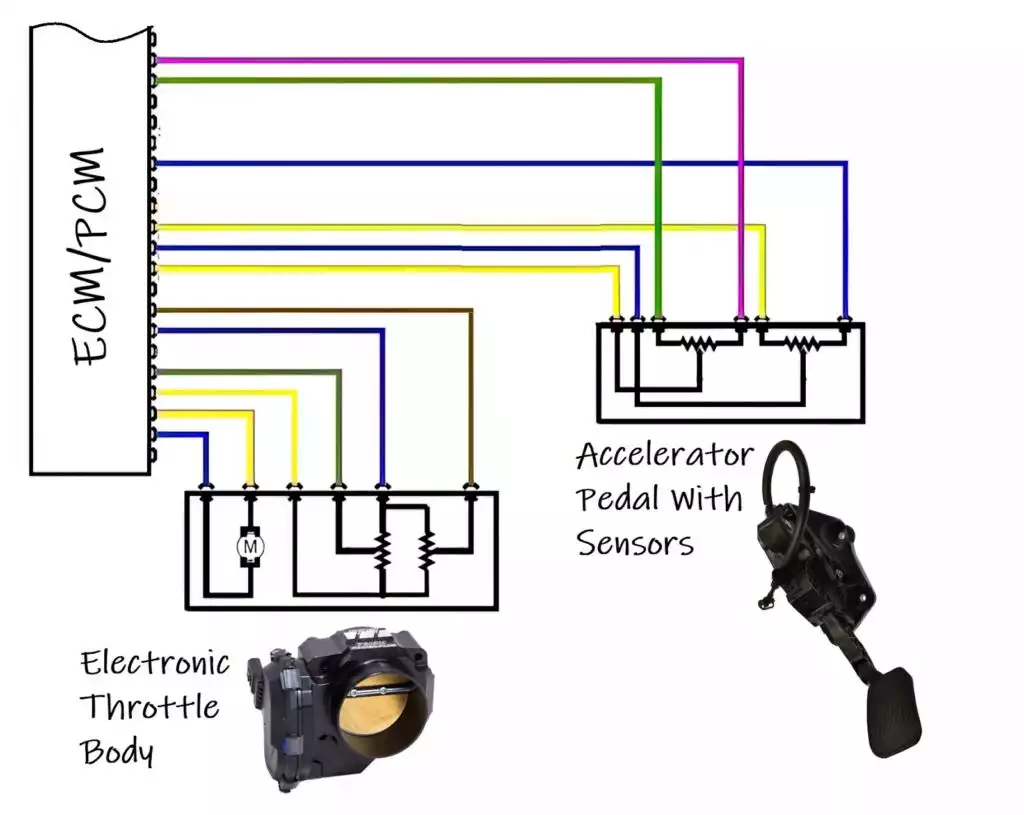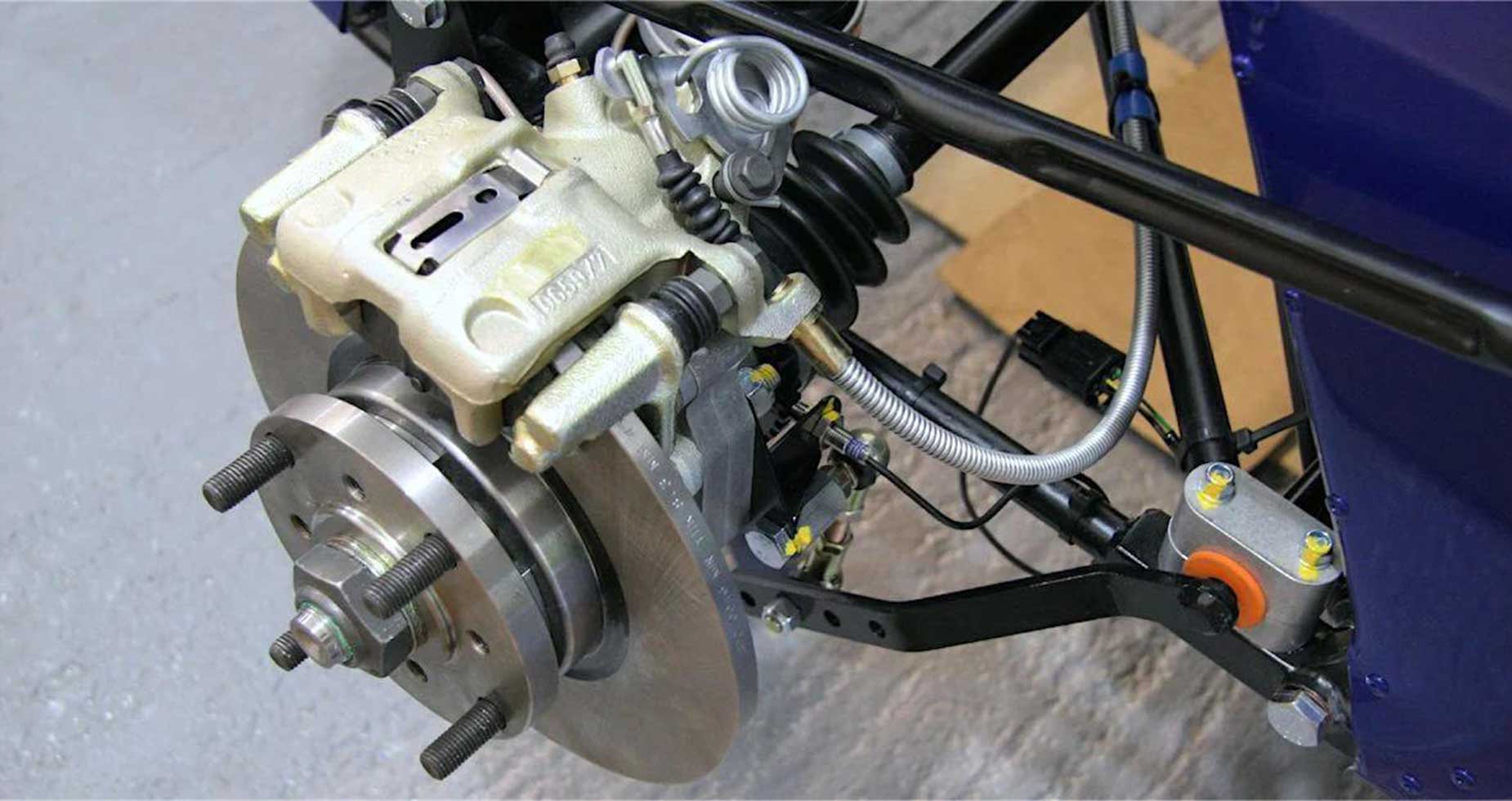When it comes to the intricate dance of combustion and power within a car’s engine, precision is key. One of the unsung heroes in this symphony of mechanical orchestration is the Hall Effect sensor, specifically employed in Throttle Position Sensors (TPS). Let’s delve into the fascinating realm of automotive technology, where Hall Effect sensors play a pivotal role in measuring throttle position and ensuring the engine’s air intake is nothing short of a ballet.
Understanding the Throttle Position Sensor
The TPS operates by utilizing a movable sensor or wiper that is connected to the throttle shaft. As the driver presses the accelerator pedal, the throttle valve opens, and the sensor relays the corresponding change in throttle position to the ECU. This real-time data is essential for the ECU to make prompt adjustments to the air-fuel mixture, ignition timing, and other parameters, ensuring optimal engine performance under various driving conditions.
One of the critical aspects of the TPS is its ability to detect sudden changes in throttle position, allowing the ECU to respond quickly to driver input. This responsiveness is especially crucial during acceleration or deceleration, as the engine needs to adapt rapidly to changes in load and driving conditions.
The TPS also aids in achieving fuel efficiency and emissions control. By accurately monitoring the throttle position, the ECU can optimize the air-fuel ratio for combustion, promoting efficient fuel consumption. Additionally, precise control over the air-fuel mixture contributes to reducing harmful emissions, aligning with stringent environmental standards.
In some advanced engine management systems, the TPS may be part of a broader network of sensors that collaborate to enhance overall engine performance. This integration allows for more sophisticated control strategies, such as electronic throttle control (ETC), where the ECU directly manages the throttle opening based on various inputs, including the TPS data.
It’s important to note that a malfunctioning or faulty TPS can lead to various issues, including poor engine performance, rough idling, and decreased fuel efficiency. Regular maintenance and periodic inspection of the TPS are essential to ensure its proper functioning. In the event of a TPS failure, diagnostic tools can be employed to identify and address the issue, preventing potential damage to other engine components.

The Hall Effect Phenomenon
At the heart of TPS lies the Hall Effect sensor, a marvel in sensor technology. The Hall Effect is a physics principle named after physicist Edwin Hall, who discovered that when a current-carrying conductor is placed in a magnetic field perpendicular to the current flow, a voltage difference is created perpendicular to both the current and the magnetic field. In simpler terms, when the position of a magnet changes, it influences the voltage across the conductor.
How Hall Effect Sensors Work in TPS
Throttle Position Sensors (TPS) play a crucial role in modern automotive engines by providing real-time feedback to the Engine Control Unit (ECU) about the position of the throttle valve. The Hall Effect sensor used in TPS applications is a semiconductor device that generates a voltage signal in response to changes in the magnetic field.
The setup typically involves attaching a small, powerful magnet to the throttle shaft, which is connected to the throttle valve. The Hall Effect sensor is strategically positioned near the path of the magnet. As the driver operates the accelerator pedal, the throttle valve opens or closes, causing the attached magnet to move in relation to the Hall Effect sensor. This movement results in a dynamic change in the magnetic field around the sensor.
The Hall Effect sensor is based on the principle that when a magnetic field interacts with a semiconductor material, it induces a voltage across the semiconductor. In the case of TPS, the magnet’s movement creates variations in the magnetic field strength sensed by the Hall Effect sensor, causing it to produce a corresponding voltage signal.
The voltage signal generated by the Hall Effect sensor is directly proportional to the throttle position. At idle or when the throttle is closed, the voltage is low, and as the throttle opens, the voltage increases. This voltage signal serves as a critical input to the ECU, allowing it to determine the precise position of the throttle valve at any given moment.
The ECU interprets the TPS signal and uses this information to make real-time adjustments to optimize engine performance. For example, when the throttle is wide open, indicating a demand for increased power, the ECU may respond by adjusting the fuel injection timing and quantity. This helps deliver the optimal air-fuel mixture for maximum power output. Conversely, during deceleration or when the throttle is closed, the ECU might reduce fuel delivery to enhance fuel efficiency and reduce emissions.
The TPS is integral to various engine control strategies, such as electronic throttle control, traction control, and cruise control. Its role in providing accurate and instantaneous throttle position feedback enables the ECU to make precise adjustments, contributing to overall engine efficiency, performance, and emissions control in modern vehicles. The Hall Effect sensor, with its reliability and responsiveness, has become a standard and effective technology in the field of throttle position sensing.

Benefits of Hall Effect Sensors in Throttle Position Sensors
Precision and Accuracy
The precision of Hall Effect sensors becomes particularly critical in scenarios where fine control over the throttle is necessary. Whether it’s during idling, cruising, or wide-open throttle conditions, the sensor ensures that the ECU receives reliable and instantaneous feedback about the driver’s input. This precision contributes to smoother acceleration, improved drivability, and enhanced overall vehicle performance.
Moreover, the linear output of Hall Effect sensors allows for precise mapping of throttle positions, enabling the ECU to finely tune the air-fuel mixture and ignition timing. This level of control is instrumental in meeting stringent emission standards and enhancing fuel efficiency. By providing accurate information about the throttle position, Hall Effect sensors empower the ECU to make real-time adjustments, optimizing the combustion process and minimizing exhaust emissions.
In addition to their role in throttle position sensing, Hall Effect sensors are also utilized in various other automotive applications, such as speed sensing, position sensing in braking systems, and detection of the position of camshafts and crankshafts. The versatility and accuracy of these sensors make them invaluable components in the pursuit of efficient and environmentally friendly vehicle operation.
Reliability
Reliability is a crucial aspect in the functionality of any electronic device or system, and Hall Effect sensors stand out as a prime example of solid-state technology that excels in this regard. Being solid-state implies that these sensors are constructed without any mechanical moving parts, which distinguishes them from traditional sensors that may have components prone to wear and tear.
The absence of moving parts in Hall Effect sensors is a significant advantage, as it eliminates the potential points of failure associated with mechanical fatigue. Traditional sensors with moving components are susceptible to mechanical stress, friction, and eventual wear, leading to a gradual degradation of performance over time. In contrast, Hall Effect sensors offer a level of inherent stability that translates into a prolonged lifespan and sustained accuracy in their measurements.
The durability of Hall Effect sensors plays a pivotal role in enhancing the overall longevity and dependability of systems in which they are employed, such as the Throttle Position Sensor (TPS). These sensors are commonly used in automotive applications to measure the angle of the throttle plate, providing crucial input for engine control systems.
The solid-state nature of Hall Effect sensors contributes not only to their mechanical robustness but also to their ability to withstand harsh environmental conditions. They are less susceptible to damage from vibrations, shocks, and temperature fluctuations, making them well-suited for demanding applications in automotive, industrial, and aerospace settings.
Furthermore, the reliability of Hall Effect sensors translates into consistent and accurate data acquisition. The stable performance of these sensors ensures that the information they provide is trustworthy, which is essential for critical functions within a system. In applications like electronic control units (ECUs) in vehicles, the reliability of TPS measurements directly impacts engine performance, fuel efficiency, and emissions.

Compact Design
The compact design of Hall Effect sensors presents a multitude of advantages, especially when seamlessly integrated into the Throttle Position Sensor (TPS) within the intricate confines of contemporary engine compartments. The streamlined nature of these sensors not only facilitates their incorporation but also plays a pivotal role in enhancing the overall efficiency and performance of the engine system.
One of the key benefits of their diminutive size lies in the minimal space they occupy, addressing the spatial constraints prevalent in modern engine compartments. This compactness allows for strategic placement within the engine assembly without compromising on the available space for other critical components. As a result, manufacturers can optimize the layout of the engine bay, ensuring an efficient use of every inch and accommodating various systems and sensors without sacrificing performance or reliability.
Moreover, the compact design of Hall Effect sensors contributes to reduced weight and bulk, factors that are increasingly crucial in the automotive industry’s pursuit of lightweight materials and fuel efficiency. The streamlined form not only aids in minimizing the overall weight of the engine system but also supports vehicle manufacturers in meeting stringent emissions and efficiency standards.
The ease of integration extends beyond just physical space considerations. The compact size of Hall Effect sensors simplifies the wiring and connectivity aspects, fostering a more straightforward installation process. This not only saves time during manufacturing but also enhances the reliability of the system by minimizing the potential for wiring errors or connectivity issues.
In addition to their physical attributes, the compact design of Hall Effect sensors aligns with the broader trend towards miniaturization and advanced technology in automotive engineering. This allows for the integration of additional features and functionalities without compromising the overall design philosophy or creating unnecessary complexity.
Besides, the streamlined design of Hall Effect sensors enhances their durability and resilience in the challenging conditions of an engine compartment. With fewer protruding parts and a more consolidated structure, these sensors are better equipped to withstand vibrations, temperature fluctuations, and exposure to various contaminants, contributing to the long-term reliability of the engine system.
In the intricate world of automotive engineering, every component plays a vital role in the seamless operation of a vehicle. The Hall Effect sensor, embedded within Throttle Position Sensors, exemplifies how a small yet powerful device can significantly impact engine performance. As technology continues to advance, the precision and reliability offered by Hall Effect sensors in TPS ensure that drivers experience not just a ride but a refined and efficient journey on the road.











